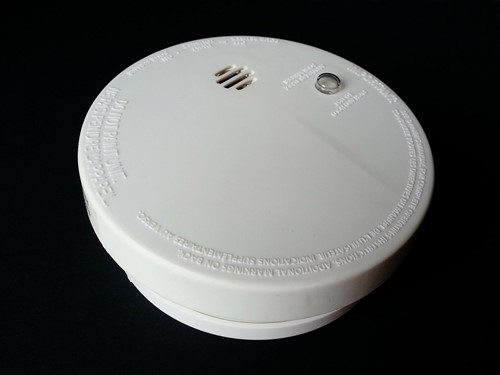
Carbon monoxide leaks are an emergency situation. Gas stoves, dryers, furnaces, wood-burning fireplaces and other gas or flame-ignited appliances are all potential sources of carbon monoxide leaks. Carbon monoxide poisoning causes headaches, nausea and other symptoms, which can turn into a life-threatening emergency with continued exposure to this gas. But don't fret.
Carbon monoxide detectors can provide you with an immediate alert when a leak is detected, allowing you and your household to get to safety outside as soon as possible. Keep the following tips in mind when placing carbon monoxide detectors for the best protection possible.
Carbon monoxide detectors work best when you place them roughly five feet above floors. Putting them too low might cause them to be less effective at detecting carbon monoxide leaks, since carbon monoxide is lighter than air. You can put carbon monoxide detectors on ceilings if you don't have a good spot to put them on the wall.
Putting carbon monoxide detectors too close to flame sources could cause them to go off when there is no carbon monoxide leak. Keep these detectors away from fireplaces and any flame-producing appliances, such as gas stoves.
Carbon monoxide detectors should be kept out of the reach of kids and pets, so they don't play with them or accidentally set them off by pressing buttons. Keeping detectors out of reach also protects them from damage.
Each floor in your home should have at least one carbon monoxide detector, which helps ensure, no matter where a leak is occurring, the nearest carbon monoxide detector will detect it and alert you and your household.
Carbon monoxide leaks can occur during the night when you and your household are sound asleep. Having a carbon monoxide detector near sleeping areas in your home helps ensure you and yours will wake up via the alert in the middle of the night, so you can get to safety.
Check your carbon monoxide detectors regularly, such as once a week, to make sure they're working. Replace the batteries in these detectors every year to keep them working properly.

During her 25 years in the South Florida non-profit sector, helping others was always at the core of Danay's professional career. As a Realtor, she now uses her extensive background in client relations, financial management, and sales to help her clients in finding their dream home.
Whether buying or selling, what matters most to her is honest communication, extreme loyalty to her clients, and a direct, hands-on approach.
Raised in Miami, she has a personal connection to the local community and has extensive knowledge of the various cities and neighborhoods across the local market. Whether a seller or buyer, you will appreciate her attention to detail, negotiation skills, and motivation.
As a homeowner herself, she recognizes and values the trust clients place in realtors and she is dedicated to working tirelessly on behalf of her clients, making the process stress-free and exceeding their expectations.
Certifications:
Residential Real Estate Probate Specialist